
In today’s automotive landscape where vehicle nameplates change with the wind and sometimes don’t make it to the third generation, we can look at the eight-generation history of the Chevrolet Corvette with wonder and awe. The hysteria surrounding the ground-breaking 2020 Corvette has enthusiasts abuzz all across the globe. To consider how the Corvette became a fire-breathing, V-8-powered, mid-rear-engine handling superstar 66 years after the first, humble front-engine, six-cylinder, solid-axle convertible debuted at the 1953 New York Auto Show is astonishing. Rooted in the display of engineering aptitude and the unique, American way of overcoming obstacles, the Corvette has remained a mainstay of American culture. So when I found myself in Bowling Green, Kentucky earlier this year—and with a rare free day in my travel schedule—I headed over to the National Corvette Museum to immerse myself in all things Corvette.
To consider the extent of General Motors’ commitment to the Corvette’s longevity and technical prowess is to revel in the promise of performance as close as the flick of your right foot, and wide-open roads just a short burst of speed away. In the 1950s when the Interstate Highway System was starting to take shape, those open roads offered a pledge of smooth, uninterrupted pavement. It was the perfect time for the Corvette to serenade the American driver with the mechanical sounds of automotive performance. The Museum holds many examples of Corvettes that are significant for one reason or another, and one thing is clear; the Corvette is unmistakable no matter the model year.

The 1953 Corvettes were hand-built, rushed into production after their initial debut, with 300 cars eventually carrying the ’53 designation. Each one wore identical Polo White exterior pigment, a red interior treatment, and a black convertible top. In 1953, these cars retailed for $3,490, which equates to $33,480 in 2019 dollars. Today, a Concours-condition car will bring around $360,000. It wasn’t a bad investment if you had the foresight to do so—and sit on the car for a lifetime.


The third year of production saw the V-8 engine become a part of Corvette lore, with a 265 cubic-inch, 195-horsepower example tucked under the bonnet. This Harvest Gold/green top roadster owned by Gary and Sharon Mortimer of Cincinnati is one of only 120 produced in this combination and has undergone a complete frame-off restoration. It’s simply beautiful.

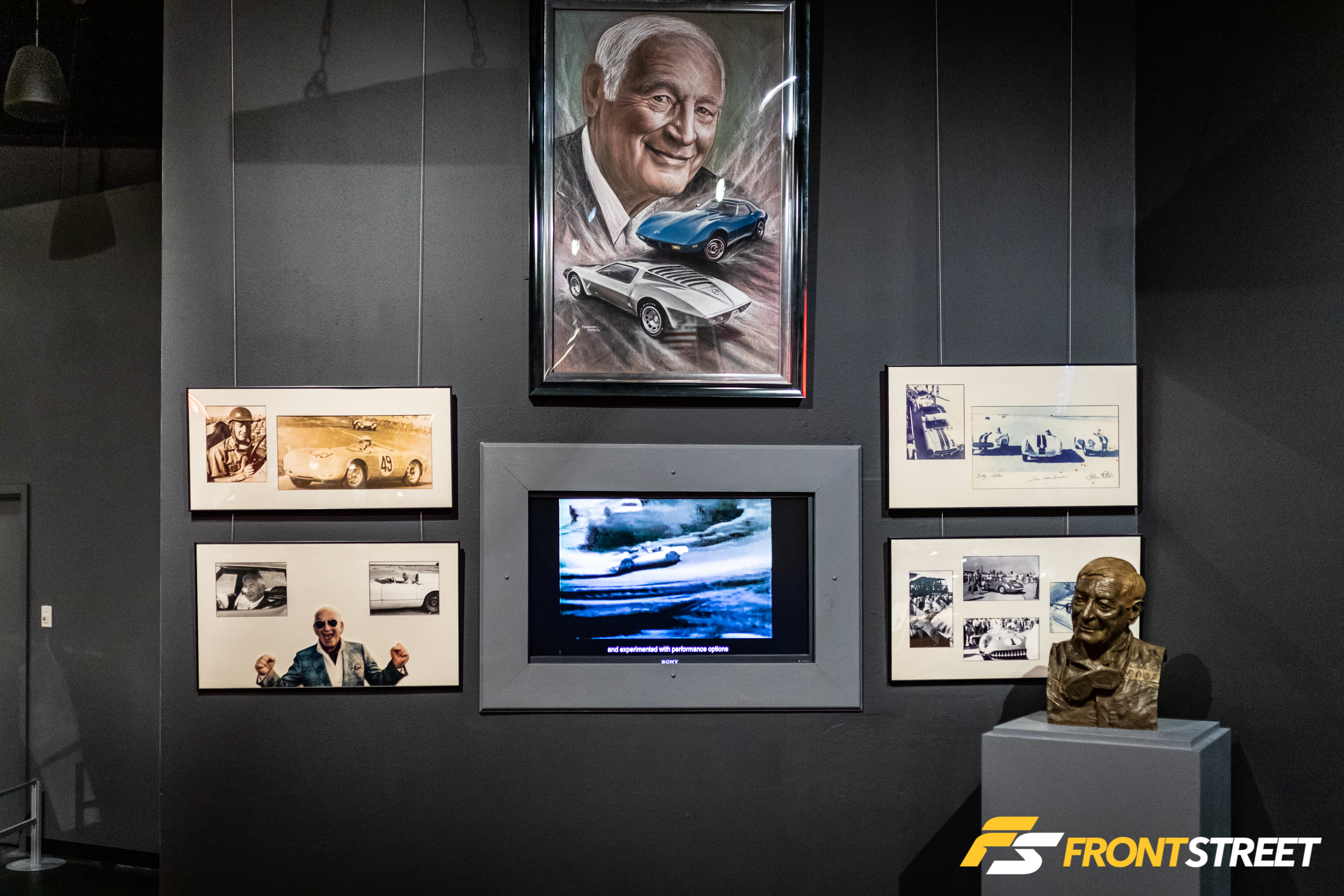

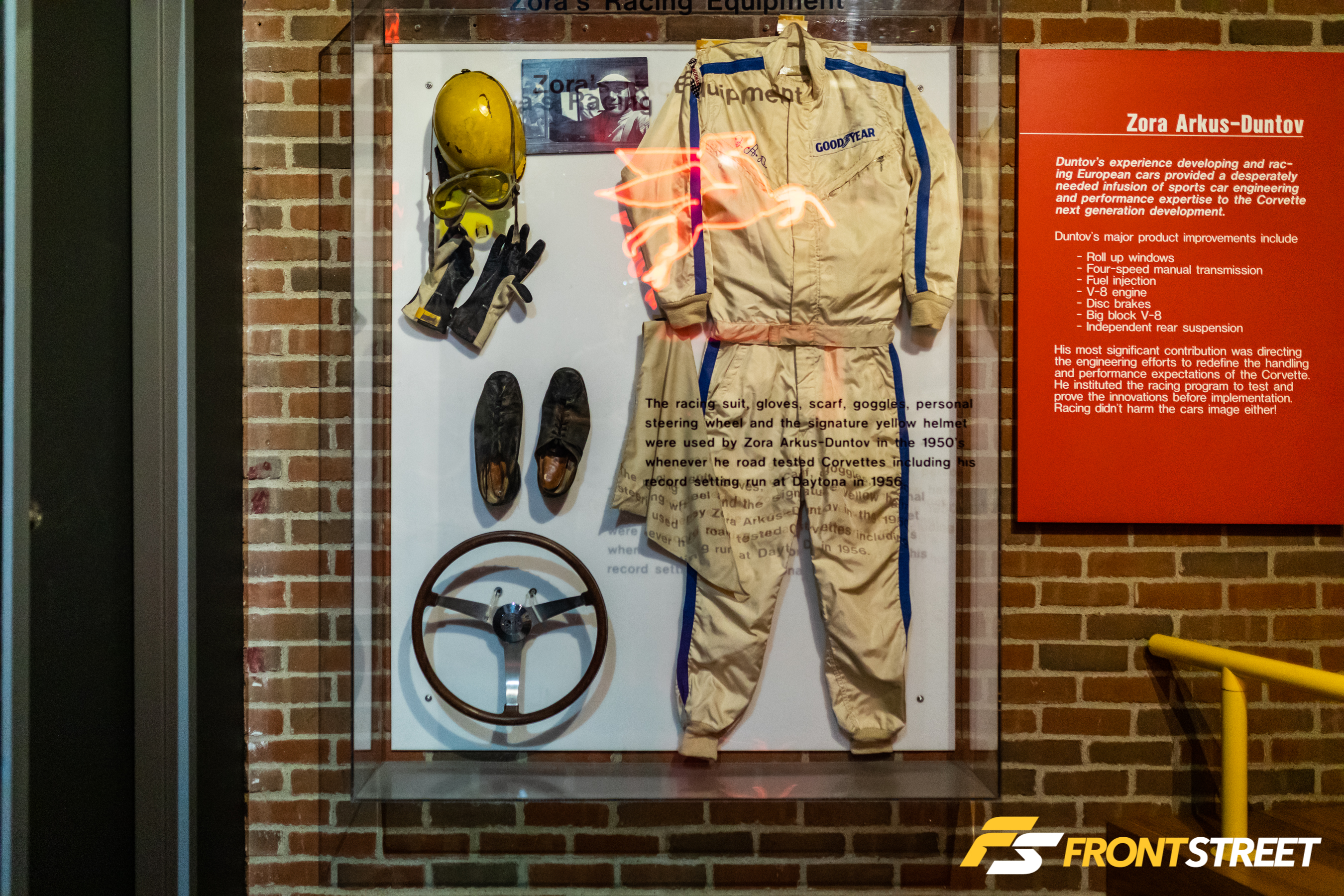

It’s impossible to overstate the importance of engineer Zora Arkus-Duntov to the Corvette’s history; even today, the nameplate is still enchanted by his larger-than-life persona. Although he is not the inventor of the Corvette—noted designer Harley Earl owns that distinction—Arkus-Duntov is rightfully considered the Father of the Corvette, as his engineering talent and vision shepherded the car’s design and mechanical aptitude through many years of development and dozens of racing victories on the track. An accomplished racer in his own right, Zora was the first to suggest building the Corvette around the mid-engine design, which has finally become reality. Although he retired in 1975 and passed away in 1996, and his ashes are entombed at the Museum, his influence still inspires the Corvette team of today. I was fascinated with this display and the idea that one man had so much power and influence over the car’s development, but it’s not surprising given his success.
I was shocked to learn that this 1974 big-block Corvette is the only one Zora ever owned; fully-optioned and wearing custom paint, the car even features prototype wheels which were not available until 1976. Les Bieri purchased the car from Zora in 1989 for the princely sum of $100,000, and then subsequently donated it to the museum as a tribute to its original owner after Zora’s death.



This 1958 Corvette is the earliest in existence, as serial number 00001 for that model year was used for testing, then cut apart for body panel analysis. This car is one of the hand-built Pilot Cars, has the 283 cubic-inch 250 horsepower V-8 engine underhood, and is the same car that was used in all of GM’s promotional literature and advertising for the 1958 model. It’s on loan from Dennis Young of Missouri and has been completely restored to its original build configuration.
One thing I found interesting as I walked around was the overwhelming sense of history. There were so many significant cars in the building that I didn’t know where to look next. I could easily have spent an entire day or two reading the placards at each display. As it was I didn’t get to take the factory tour—which wasn’t available during my visit—but since I visit Bowling Green a couple of times a year I‘m going to try to make time to do that on an upcoming trip.

This 1965 Corvette is significant for several notable reasons. It’s the one-and-only 1965 Corvette to wear Satin Silver pigment on its flanks. Not only that, but it’s also the first production Corvette and first American production automobile to have four-wheel disc brakes. David D’Onofrio’s car is on loan to the museum and features the 327 cubic-inch, 265 horsepower engine, a four-speed manual transmission, and is the only C2-generation Serial Number 00001 Corvette in existence. Super-cool stuff!
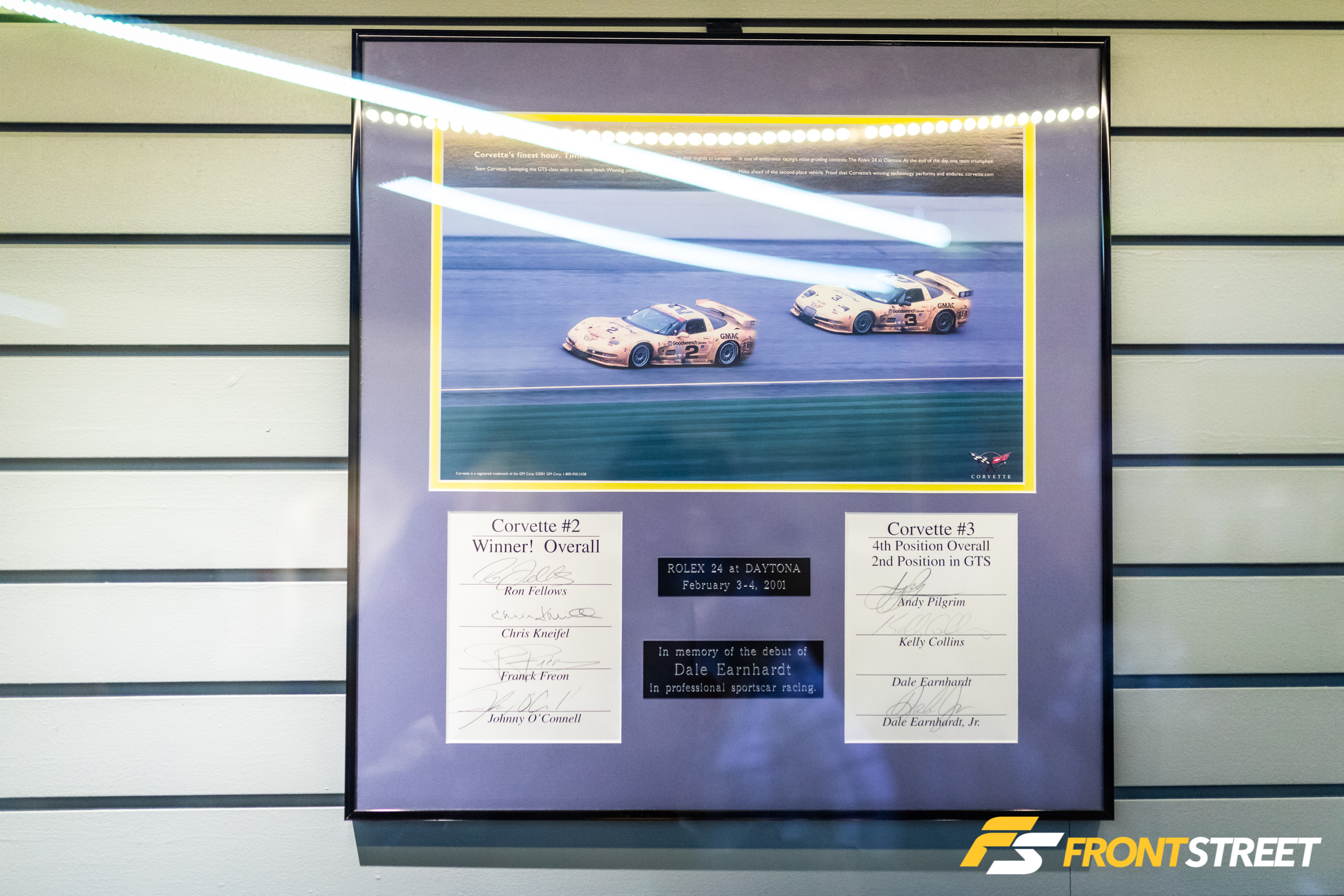
It was touching—and sobering—to see this plaque on the wall. It speaks for itself.

Racing is such a significant part of the Corvette’s history. The C5-R, built by Pratt & Miller for endurance racing use, boasts wins at the 24 Hours of Daytona, 12 Hours of Sebring, and 24 Hours of Le Mans—perhaps the three toughest tests of man and machine anywhere on the planet. There were several of its 7.0-liter, 427 cubic-inch engines on display.

Older readers will remember the Greenwood Corvettes. This particular car is the first of the 12 widebody Corvettes built by Greenwood, and then raced by Greenwood and comedian Dick Smothers at Sebring in 1976. Greenwood worked in secret with Zora Arkus-Duntov to develop the body kit and have GM part numbers assigned to satisfy the IMSA rule-makers. With 467 cubic inches and 1,000 horsepower, the Spirit of Sebring took the pole position at Le Mans and blasted 211 mph down the Mulsanne Straight.

This 2011 Corvette ZR-1 is the actual car driven by engineer Jim Mero at the Nürburgring Nordschleife to a stunning 7:19.63-second lap, at the time 6 seconds quicker than the previous Corvette best lap (set in 2008) and quicker than the Nissan GT-R, Ferrari Enzo, Pagani Zonda were on the same course.

The museum is also full of experimental cars; over the years, the Chevrolet gang has had its share of test mules that did not see production for one reason or another. In a stroke of foreshadowing, the XP-897 GT Corvette was a concept Corvette introduced in 1973 designed to showcase the mid-engine design, but at the time they planned to use Wankel rotary engines (like those in the Mazda RX-7) to replace the traditional V-8 engines of the time. At the time, Mercedez-Benz was also testing its own rotary engine platform in a mid-engined testbed called the C111.
Thankfully, that didn’t happen, and today we can look back fondly at this relic from another time, saved from the crusher by Tom Falconer of England, who graciously loaned it to the museum.

The 1986 Indy Concept Car was another mid-engine concept that never saw production. This one made use of 4-wheel drive, 4-wheel steering, active electronic/hydraulic suspension, anti-lock brakes, traction control, and drive-by-wire throttle control—all technologies that are commonplace today but were engineering achievements 30-plus years ago. Although the car was just a mockup designed to show off the collaboration between Chevrolet and Ilmor on the 5.7-liter, 32-valve dual-overhead-cam V8 engine designed for Indy racing, it’s impossible to look at it and not compare it visually to the C8 Corvette.

Why is there a fourth-gen Camaro in the National Corvette Museum? Because the only Camaro pieces on this car consist of the exterior panels and seating area—the entire drivetrain is C5 Corvette. Hiding items in plain sight that are part of critical testing processes in the “Cormaro” is one way that Corvette engineers were able to flesh out the C5 parts without giving away the details to prying eyes.
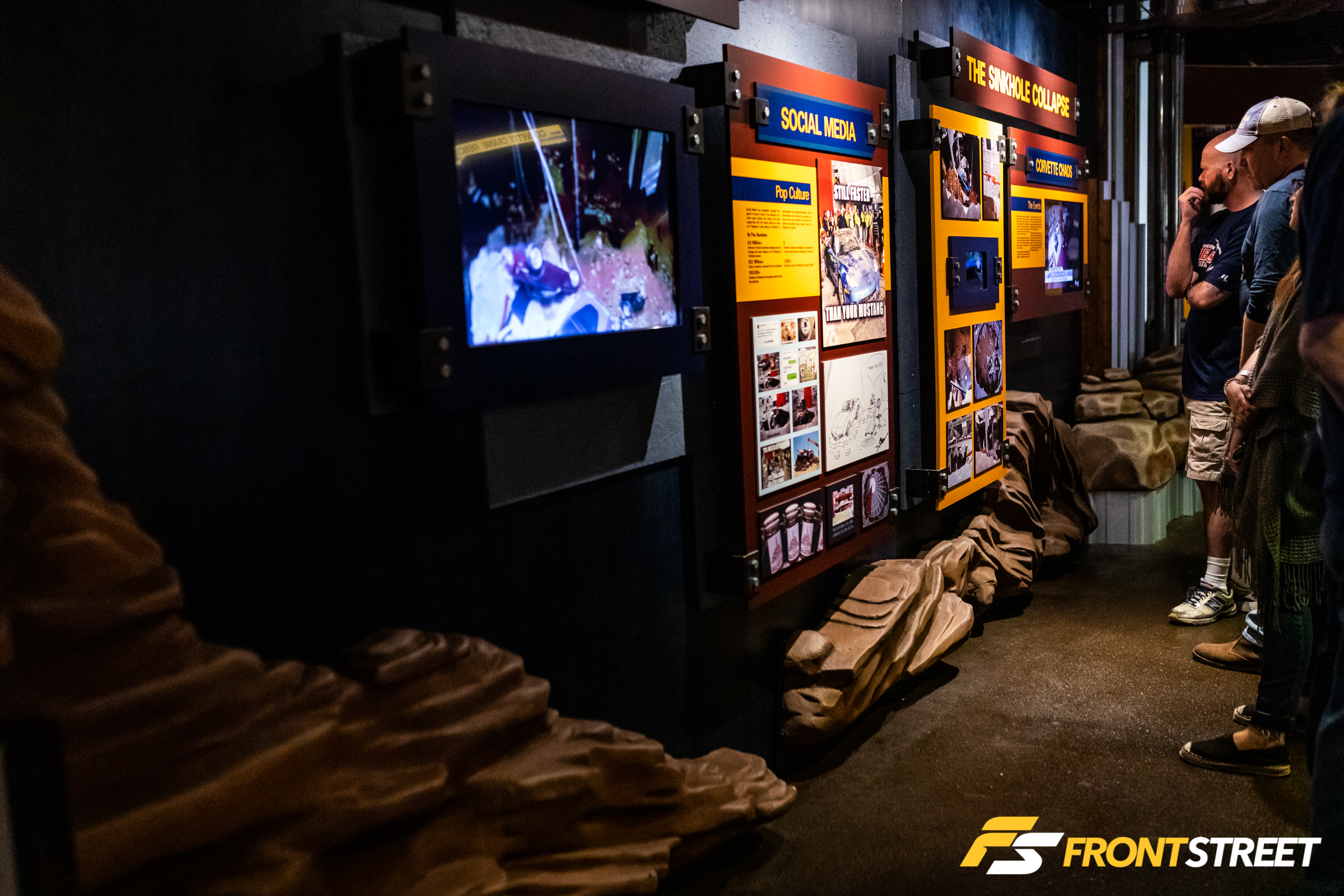




The star of the show at the National Corvette Museum—and quite by accident—was the display that detailed the cave collapse that occurred in the museum’s Skydome area back in 2014. A 200-foot-long cave exists under the Skydome, and when the collapse occurred, eight Corvettes took a hard ride into the depths of the hole. Several of the cars—some of them priceless examples like the 1.5 millionth Corvette ever made—were unrepairable after the accident and are on display in as-recovered condition. Originally purchased by the National Corvette Museum to preserve its placed in history, the 2009 Corvette in the last photo of the stack above could not be seen immediately after the collapse, as it was buried underneath the destroyed Mallett Hammer 2001 Corvette Z06 magazine cover car, which is seen in the photo above it.

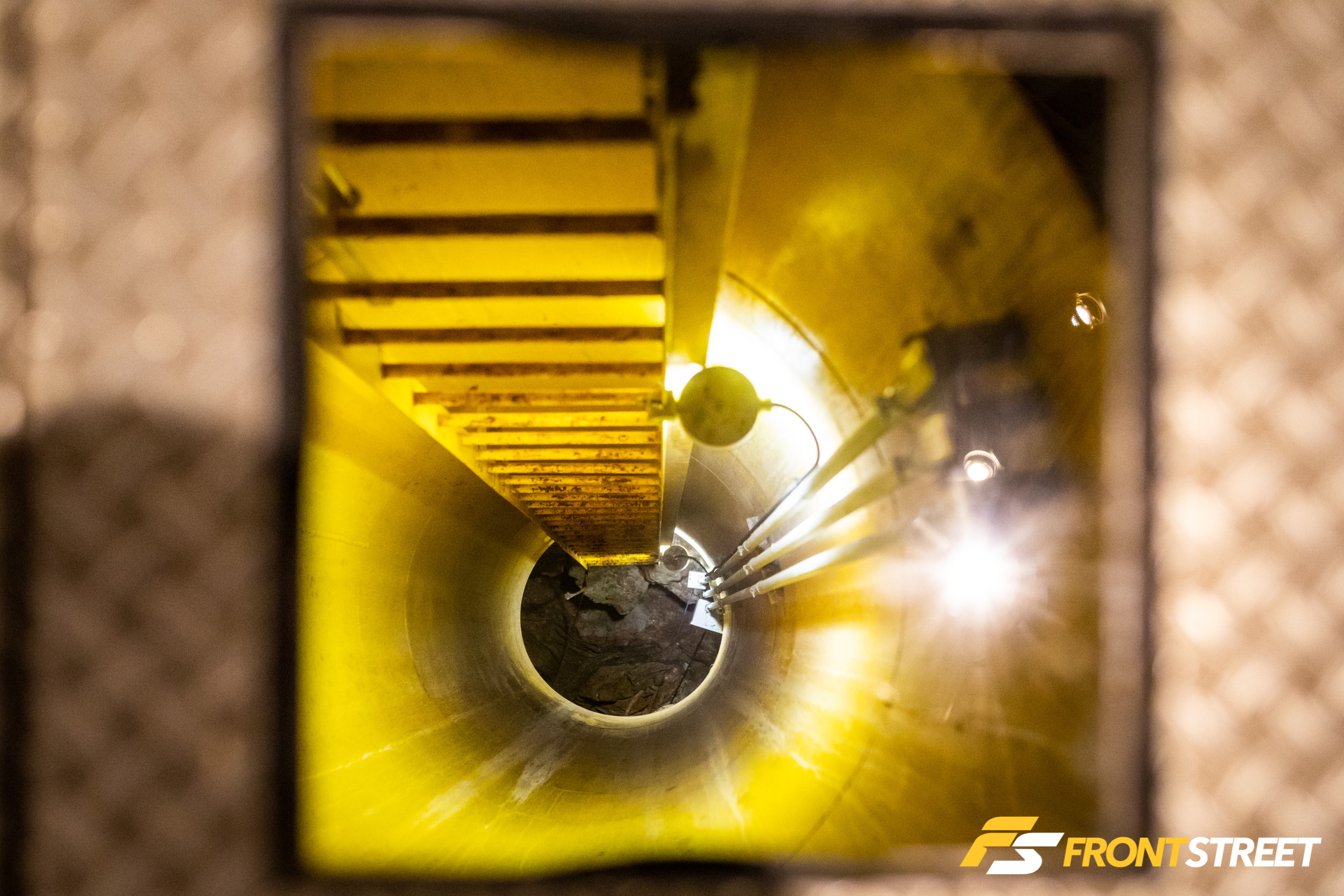
It was interesting to be able to look into the depths of the cave from above, but also slightly unsettling. I wondered if it was going to collapse under my feet, especially as I walked around the room and saw how big the outline was, and then thought about how much weight was atop the cave when you take the weight of the cars and structure into account.

2020 Chevrolet Corvette Stingray—Photo General Motors
Enthusiast excitement is high regarding the 2020 Corvette’s mid-engine design, stunning appearance, and performance potential; it is certainly warranted given the marque’s history. Without the cars above that fill every corner of the museum’s chambers, it would not be possible.
Despite being a Ford guy at heart, the rich sense of history which envelops the building coupled with the amazing displays kept me enthralled during my trip to the National Corvette Museum. I even bought an embroidered Corvette hoodie on my way out. Tall white socks, a pair of New Balance running shoes, and the purchase of a Z06 come next. I can afford two of those things…









